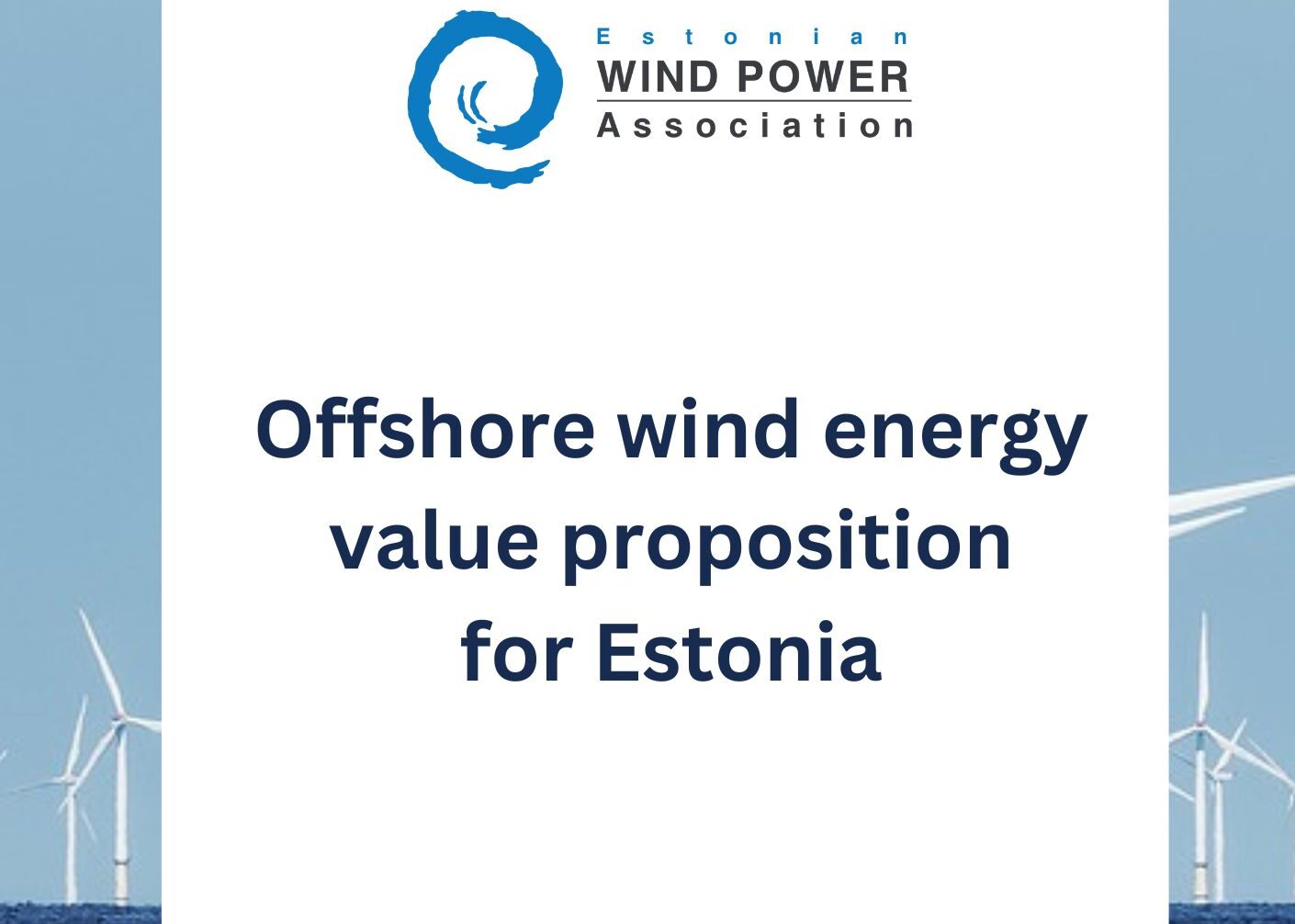Estonian Power Association prepared an analysis of the role and values of offshore wind energy in the future of Estonian energy.
Analysis results:
- Estonia has set the target of producing electricity from renewable sources for all its power consumption by 2030. Estonia’s annual consumption today is 9 TWh, of which 5 TWh is produced from fossil fuels and 2.6 from renewable sources. The remaining 1.4 TWh are imported. To cover only today’s consumption in 2030, Estonia must create an additional capacity for the annual production of 6.4 TWh of renewable electricity, not considering future power demand for industry, heat and transport.
- To meet this need, at least 380 MW of new onshore wind capacity would be needed to be constructed annually until 2030. Estonia lacks unrestricted land or mature projects to meet this goal. The best way to cover Estonia’s growing energy needs is to also build offshore wind projects in addition to onshore wind projects.
- The currently most pressing bottleneck in wind energy development is the slow permitting process, which takes years despite the state’s efforts to better organize it. Rules are contradictory, and it is left to the developer to resolve the issues. Almost all Estonian onshore and offshore wind projects are challenged in court cases processed for years due to missing or misleading regulations.
- Connecting to the grid is also still very difficult for wind projects onshore as well as offshore. The Estonian electricity grid has historically been oriented from East to West, but most wind energy areas are in the West. The developer bears the costs of connecting to the network. Building a west-east network only at developers’ expense is not economically sustainable.
- The strain on infrastructure, logistics and supply chains due to the general inflationary cost and interest rate increase affect the economic viability of both onshore and offshore projects. It is challenging to build new capacities in the entire region only under market conditions, especially with such low domestic consumption as in Estonia.
- Countries with long-term plans and support measures in line with market conditions successfully establish offshore projects. In most cases, the state can offer network connection and CfDs (Contracts for Difference) or there are large electricity consumers with whom to conclude PPAs (Power Purchase Agreements). Along with this, a clear legal framework provides reassurance to all involved parties. Building offshore wind projects is a National and overarching interest in countries of the European Union and Europe today, not just a business that takes place against market conditions only.
- According to EAS, thirteen energy-intensive industrial units are waiting to come to Estonia, with a total investment of €4,898 million, creating 2,890 jobs. Their annual electricity demand is 5.8 TWh, 73% of Estonia’s. These investments will only come to Estonia if the availability of renewable electricity is guaranteed.
- With the establishment of offshore wind projects, maintenance ports will be created in Saaremaa and Pärnu County, creating jobs for residents. A 1GW offshore wind project establishes an average of 150 direct and 150 indirect jobs on site. Paldiski South Harbour has excellent potential to become the offshore construction port for the entire region.
- Based on the current law in Estonia, wind projects share profits with the local municipality. The 1GW offshore wind project will contribute at least €1-1.4 million annually to the local community at today’s average electricity prices.
- Estonian offshore wind projects need a plan from the government for the next fifteen years like in the UK, Germany, the Netherlands or Poland. Electricity is required to cover existing needs and the economy’s growth and move away from fossil energy sources in all energy consumption.
The plan must include:
- Clear legislation.
- A timetable for support measures.
- A timeframe for grid connections.
Taking into account last years’ hourly electricity prices, the CfD income of one GW offshore park would have been the following for the state:
- If the CfD had been concluded at a price of 75€/MWh, the country would have earned 399 million euros;
- If the CfD had been concluded at a price of 80€/MWh, the country would have earned 379 million euros;
- If the CfD had been concluded for 86.5 €/MWh (the price used in the MKM analyses), the country would have earned 354 million euros;
- If the CfD had been concluded at a price of 90€/MWh, the country would still have earned 340 million euros.

